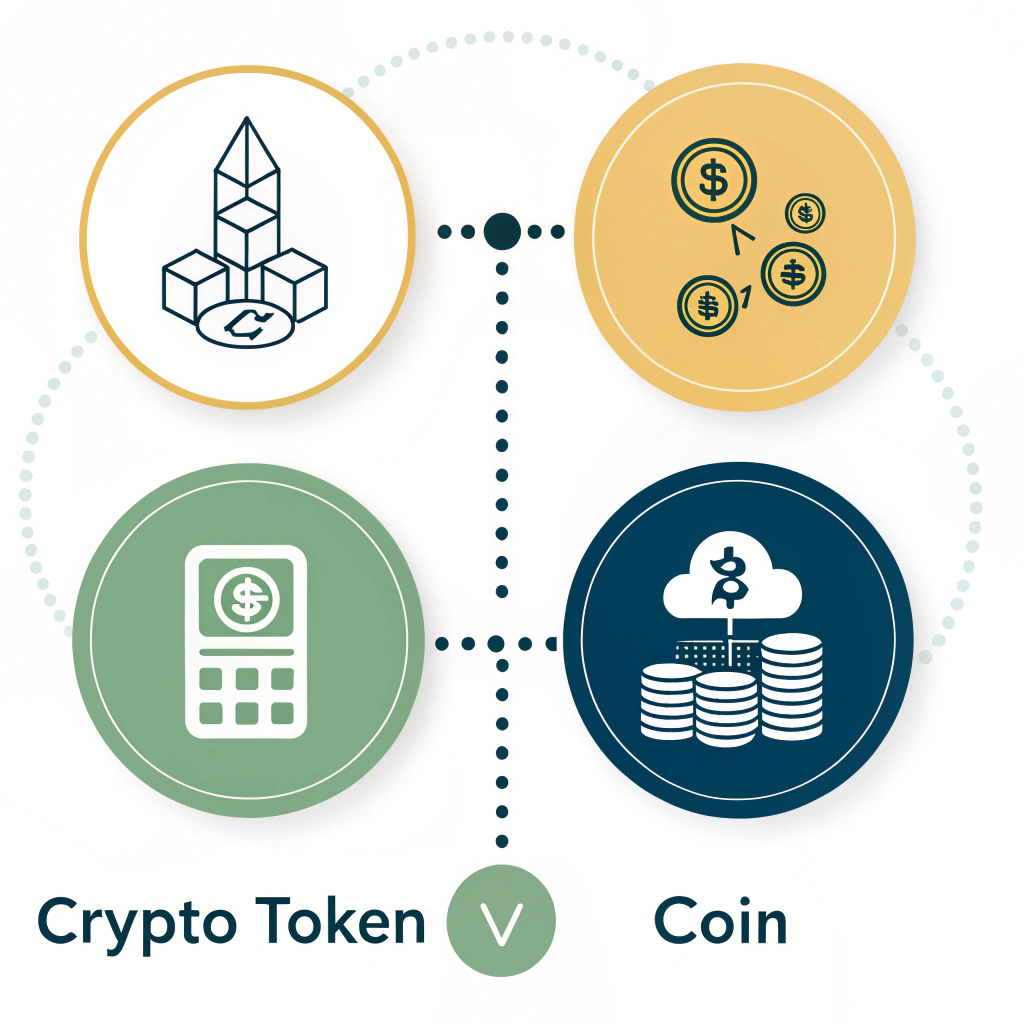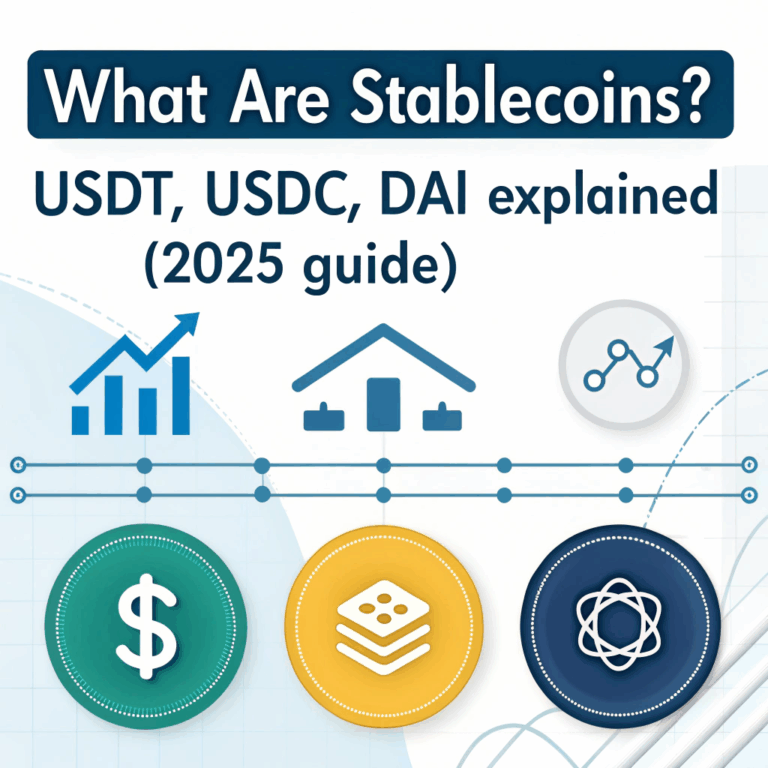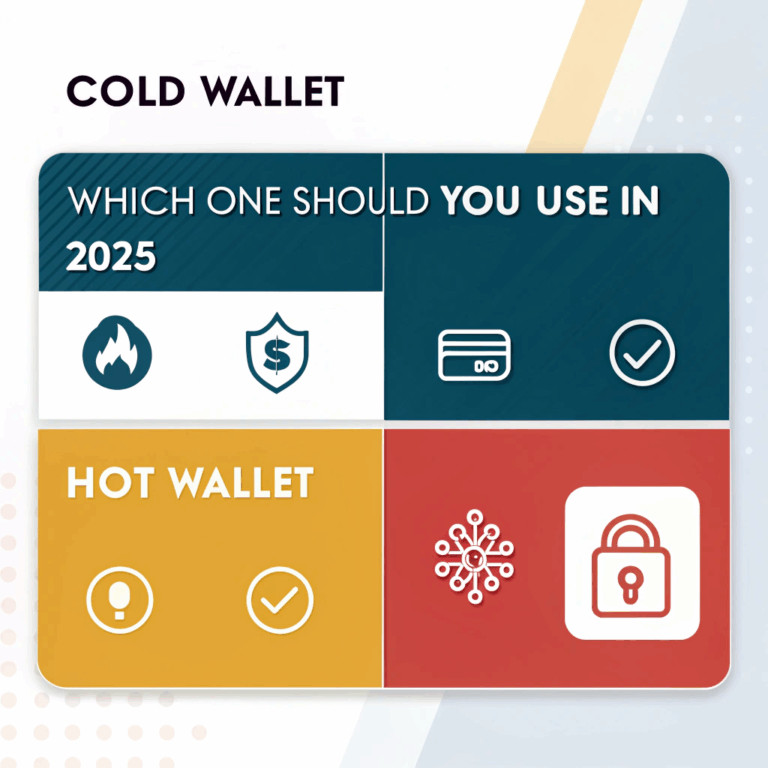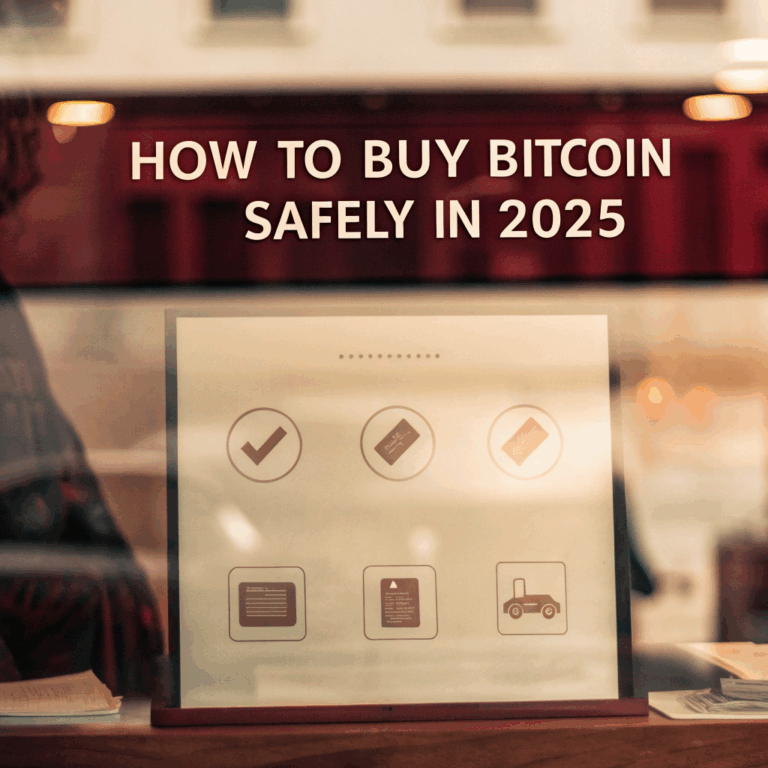What is a Crypto Token vs. a Coin? Simple Explanation for Beginners (2025)

Introduction
In the world of cryptocurrency, the terms “coin” and “token” are often used interchangeably — but they aren’t the same. In this guide, you’ll learn the exact differences between coins and tokens, with examples, use cases, and what you should know as an investor in 2025.
What is a Crypto Coin?
A coin is a digital currency that operates on its own native blockchain. It’s primarily used as a medium of exchange, store of value, or to pay transaction fees within its own network.
Key points:
- Has its own blockchain
- Can be mined or staked
- Examples: Bitcoin, Ethereum, Litecoin
What is a Crypto Token?
A token is a digital asset built on top of an existing blockchain using smart contracts. It doesn’t have its own blockchain and relies on another network (like Ethereum or BNB Chain) for security and operations.
Key points:
- Built on another blockchain
- Uses smart contracts
- Examples: USDT (on Ethereum), Uniswap (UNI), Chainlink (LINK)
Key Differences Between Coins and Tokens
| Feature | Coins | Tokens |
|---|---|---|
| Blockchain | Has its own | Built on another chain |
| Creation | Native protocol | Smart contract |
| Use case | Payments, fees, governance | Utility, governance, assets |
| Example | BTC, ETH, ADA | LINK, UNI, USDT, AAVE |
| Transaction fees | Paid in coin | Paid in network’s coin (e.g. ETH for ERC-20) |
Examples of Popular Coins
- Bitcoin (BTC): The original cryptocurrency
- Ethereum (ETH): Smart contract platform coin
- Cardano (ADA): Research-driven blockchain
- BNB: Coin of Binance Smart Chain
- Solana (SOL): High-speed smart contract platform
Examples of Popular Tokens
- Uniswap (UNI): Governance token on Ethereum
- USDT (Tether): Stablecoin on multiple blockchains
- Chainlink (LINK): Oracle service token
- Aave (AAVE): DeFi lending protocol token
- MATIC (Polygon): Layer 2 token on Ethereum
How Coins Are Created (Native Blockchains)
Coins are created as part of the design of a blockchain network.
They’re generated by:
- Mining (Proof of Work) — e.g., Bitcoin
- Staking (Proof of Stake) — e.g., Cardano, Ethereum 2.0
Coins are critical to operating and securing their respective blockchains.
How Tokens Are Created (Smart Contracts)
Tokens are deployed using a smart contract on a host blockchain. Anyone can create a token with basic programming skills.
Token standards:
- ERC-20 (Ethereum)
- BEP-20 (BNB Chain)
- SPL (Solana)
No mining/staking is required for token creation — it’s like launching a custom app inside someone else’s operating system.
Use Cases: When Do You Use a Coin vs. a Token?
- Use a coin to:
- Pay for transaction fees
- Make payments
- Stake or secure the network
- Use a token to:
- Access services in DeFi apps
- Represent ownership or assets (NFTs)
- Vote in governance systems
- Represent fiat-pegged value (stablecoins)
Are Coins or Tokens a Better Investment?
There’s no universal answer. Coins like BTC and ETH are more established and secure, while tokens can offer higher growth potential (and higher risk). Evaluate each based on:
- Project fundamentals
- Use case
- Community and adoption
- Security and audits
Risks of Investing in Tokens vs. Coins
- Tokens: Often more speculative, easier to create (more scams), reliant on host blockchain
- Coins: More infrastructure-driven, but can still fail without user adoption
Always DYOR (Do Your Own Research) before investing in either.
FAQ
Is Ethereum a coin or a token?
A coin. It runs on its own blockchain.
Can I create my own token?
Yes, using smart contracts on platforms like Ethereum or BNB Chain.
Are tokens less secure than coins?
Not necessarily — but they rely on the security of the host blockchain.
Do I need ETH to use an Ethereum-based token?
Yes. You need ETH to pay gas fees even when sending tokens.
Conclusion
Coins and tokens are both essential parts of the crypto ecosystem, but they serve different purposes. Understanding the difference helps you navigate wallets, exchanges, and investments with more confidence in 2025 and beyond.





